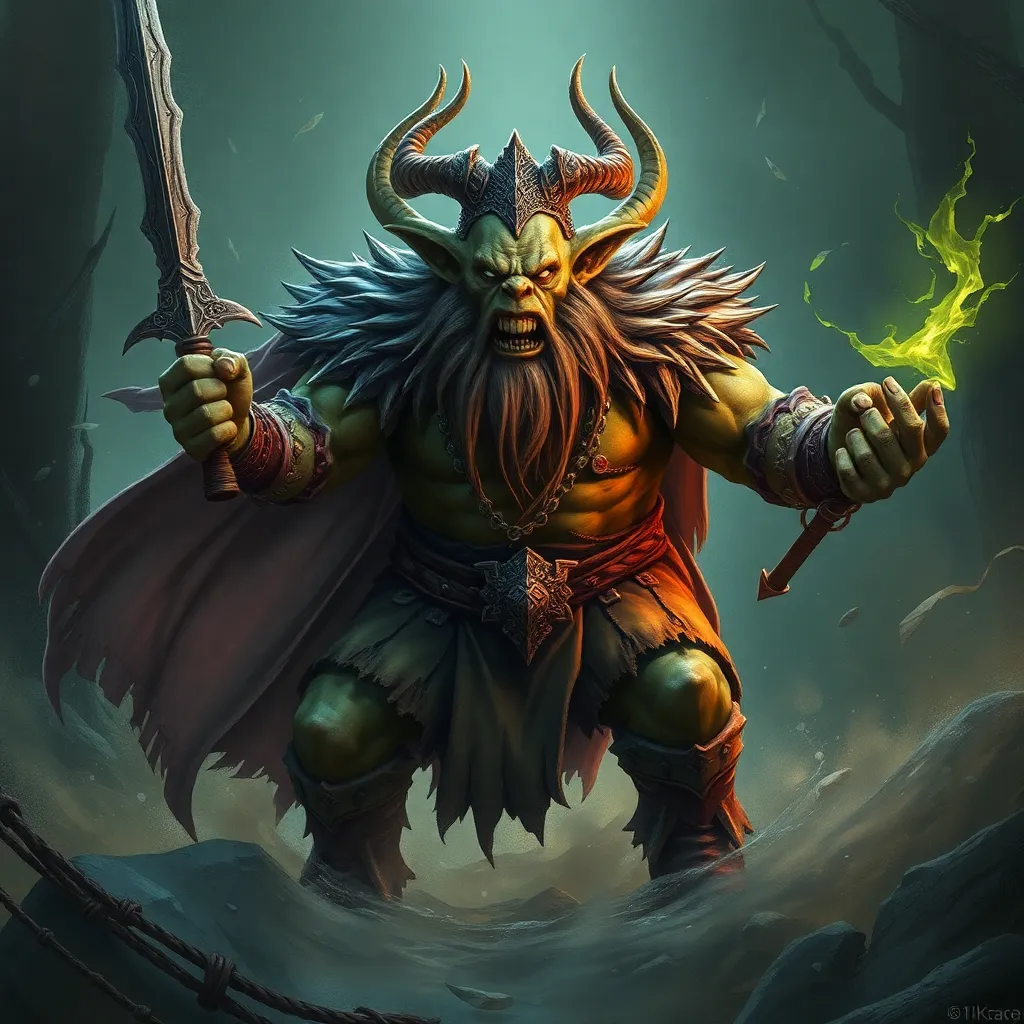The Skinwalker’s Trail: Tracing the History of Shapeshifting Beliefs
I. Introduction
Shapeshifting is a captivating concept that appears in various cultures around the world, symbolizing transformation and the fluidity of identity. At the forefront of this phenomenon in Native American folklore is the figure of the skinwalker, a being capable of transforming into different animals or humans. The significance of skinwalkers transcends mere superstition; it reflects profound cultural values, fears, and social dynamics.
This article aims to explore the rich tapestry of shapeshifting beliefs, focusing on the skinwalker within the Navajo tradition while also examining global perspectives and modern interpretations of these ancient narratives. Through this exploration, we will uncover the enduring impact of these beliefs on contemporary society and cultural identity.
II. Origins of Shapeshifting Beliefs
Shapeshifting has roots in ancient myths and folklore, often serving as a narrative device to explain natural phenomena or human emotions. Many cultures have tales of beings that can assume different forms, reflecting the relationship between humans and the natural world.
Some early examples include:
- Lycanthropy in European folklore, where humans transform into wolves.
- The were-jaguar in Mesoamerican cultures, representing strength and duality.
- The skinwalkers in Navajo tradition, embodying fears and moral lessons.
Nature and animals play a central role in these beliefs, often symbolizing characteristics that humans aspire to or fear. This connection between the human experience and the animal realm highlights the importance of understanding one’s environment in shaping cultural narratives.
III. The Navajo Perspective on Skinwalkers
The Navajo Nation, located in the southwestern United States, has a rich cultural heritage deeply intertwined with beliefs about skinwalkers. Historically, skinwalkers are viewed as witches or sorcerers who have gained the ability to shapeshift through malevolent means, often to harm others.
Navajo teachings emphasize that skinwalkers are not merely mythical creatures but embodiments of the darker aspects of human nature. This perspective is underscored by the following points:
- Skinwalkers are said to be individuals who have broken a cultural taboo, often involving the death of a close family member.
- They are distinct from other supernatural beings, such as tricksters or benevolent spirits, who embody different cultural values.
- The fear of skinwalkers serves as a moral lesson, warning against straying from cultural norms.
These beliefs are deeply embedded in the Navajo worldview, influencing social conduct and communal ties.
IV. Shapeshifting in Global Mythology
Shapeshifting myths are not confined to the Navajo tradition; they permeate global folklore, each culture interpreting transformation through its unique lens. A comparative analysis reveals both similarities and differences in these beliefs:
- In Norse mythology, the god Loki is known for his ability to change form, often causing chaos.
- In Hindu mythology, gods like Vishnu take on various avatars, illustrating the concept of divine transformation.
- In African folklore, the trickster figure Anansi can shapeshift, representing the cleverness of the spider.
These key figures and their tales illustrate that while shapeshifting serves various functions across cultures, it often reflects deeper societal values, fears, and aspirations.
V. Psychological and Sociological Interpretations
Beliefs in shapeshifting and skinwalkers can have profound psychological and sociological effects on communities. Shapeshifting often serves as a metaphor for transformation, identity, and social change.
Some interpretations include:
- The psychological impact of these beliefs can create a sense of fear or caution regarding the unknown, influencing community behavior.
- Shapeshifting as a metaphor can signify personal growth or change, reflecting an individual’s journey through life’s challenges.
- Fear surrounding skinwalker narratives often highlights power dynamics within communities, focusing on who holds authority and how they can be challenged.
These narratives not only serve to entertain but also offer insights into the complexities of human behavior and societal structures.
VI. Modern Representations of Skinwalkers
In contemporary culture, the figure of the skinwalker has been popularized through various media, influencing public perception of these ancient beliefs. Literature, film, and art have reinterpreted skinwalkers, often blending traditional elements with modern themes.
Some notable influences include:
- Movies like “The Curse of the Skinwalker” and “Skinwalkers” have brought attention to the myth, albeit with varying degrees of accuracy.
- Television series often depict skinwalkers as villains, distorting their cultural significance.
- Art installations and literature by indigenous artists aim to reclaim the narrative, emphasizing cultural authenticity.
As modernization continues to influence traditional beliefs, it is crucial to engage with these representations critically, recognizing the original meanings and values embedded in the lore.
VII. The Cultural Significance of Shapeshifting Today
Despite modernization, the cultural significance of shapeshifting and skinwalkers remains strong, particularly within indigenous communities. Preservation of these beliefs is vital for cultural identity and continuity.
Key aspects include:
- The importance of storytelling as a means of passing down knowledge and values across generations.
- Engagement with these beliefs in contemporary society fosters respect and understanding of indigenous cultures.
- Community events and gatherings often incorporate traditional stories, reinforcing cultural ties and identity.
Through these practices, the legacy of shapeshifting beliefs endures, reminding us of the importance of cultural heritage.
VIII. Conclusion
The journey through the historical and cultural landscape of shapeshifting beliefs reveals a rich tapestry of narratives that continue to resonate today. From the Navajo skinwalker to global mythological figures, these stories encapsulate universal themes of transformation, fear, and identity.
As we navigate modern society, the relevance of skinwalkers and shapeshifting remains evident, serving as a bridge to understanding our shared humanity. Embracing cultural understanding and respect for these ancient beliefs is imperative, ensuring that they remain vibrant and meaningful in the contemporary world.



